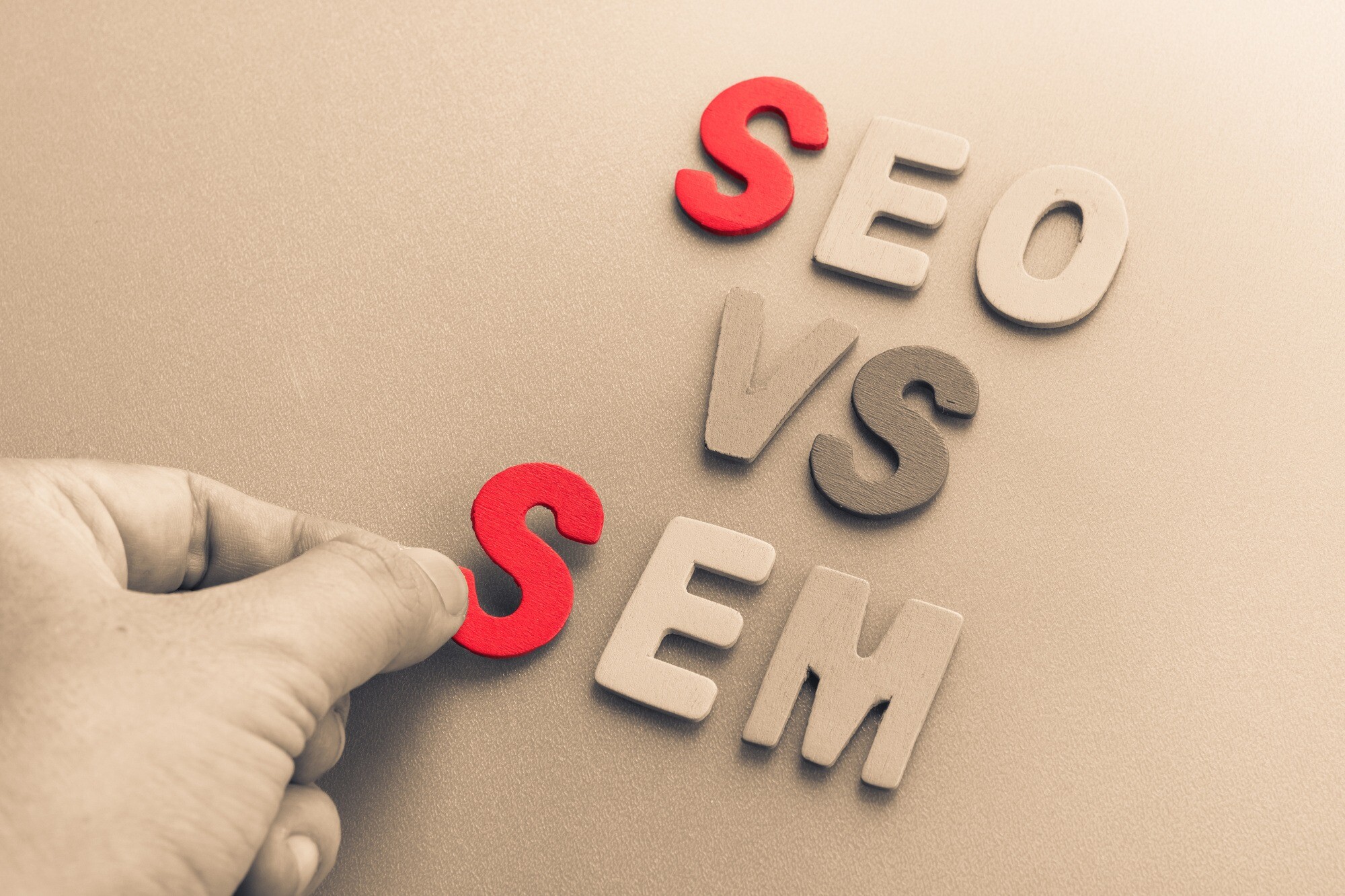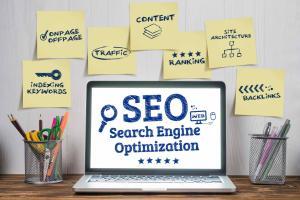What is the difference between SEO and SEM? Internet users are gradually turning to new search technologies like voice search and image recognition tools to find information online. But even with the growth of those new technologies, conventional search engines still account for 98 percent of searches.
To get traffic to your site, you need to appear in the search results. You have two options for getting your website to rank in the top spots for important search terms in your market — SEO and SEM.
What’s the difference between SEO and SEM? First, let’s look at how the two compare.
What Is Search Marketing?
Search marketing is a blanket term covering all types of search engine marketing strategies, both paid and organic.
While there are several popular search engines, Google has the largest market share by a wide margin. Because of that massive lead in search, most search marketing strategies focus on ranking well on Google.
The Difference Between SEO and SEM
SEO, or search engine optimization, is the organic strategy focused on ranking your website higher in the search results. SEM, or search engine marketing, is the paid strategy using pay-per-click (PPC) ads.
The term SEM is used interchangeably with PPC for paid traffic, but SEM is sometimes used to cover all types of search engine marketing, paid and organic. In this article, we’ll be using SEM to mean paid strategies.
What Is SEO?
SEO is the process of optimizing various parts of your website to help your web pages rank higher in the Google SERPs (search engine results pages). The easier it is for Google to determine what each page on your site is about, the more likely they are to rank for particular search terms.
There are three primary components to effective SEO:
- On-page optimization
- Off-page optimization
- Technical optimization
On-Page SEO
On-page optimization is about factors within the pages on your website. These factors include using keywords within the page’s content to help Google determine its contents.
When someone searches for something on Google, they usually search for keywords or phrases rather than entire sentences. So by including those words on your web page, it helps Google connect it to the searcher.
Other on-page factors include your site’s navigation, design, images, and accessibility features.
Off-Page SEO
Off-page SEO refers to things on other websites that add value to yours and give Google reason to consider your site an authority in your market.
The most important off-page factor is back-links to your site. These are links on other websites that point to pages on your site. Google treats those links as “votes” that indicate your site has value.
The more links there are to a page on your site, the more valuable it must be.
Technical SEO
Technical SEO is about the foundation and structure of your website. Technical SEO includes how quickly it loads, how clean the code makes up the page, and tags and other specialized components that help Google understand your site’s layout.
What Is SEM?
With SEM, you pay to rank your site at the top of the Google results. You bid on how much you’re willing to pay for each click, but you only pay when someone clicks on the ad.
This fee is where the term pay-per-click advertising originated.
While Google still considers your site’s quality when ranking the paid placements, its placement is mainly determined by the highest bid. So if you bid more than your competition, your ad will likely display above theirs.
How the Two Strategies Compare
SEO and SEM have several things in common, including:
- Helping your website appear in the search results
- Targeting particular keywords people are searching for
- Sending more traffic to your website
Both strategies require keyword and market research to identify your most likely customers and what they’re searching for. Both also need ongoing testing and tweaking to ensure you get the most value from them.
There are several key differences between the two strategies as well, including:
- Where they appear in the results
- Cost
- Reach
- Time to implement
Most Google users understand which links are ads and which are the actual search results. As a result, the click-through rate is typically higher for the organic results because searchers consider those “recommended” by Google.
There’s a noticeable cost difference between paying for clicks (SEM) and not paying for them (SEO), but it’s not as black-and-white as it seems. While there’s no direct cost for organic clicks, there’s still a cost of time and effort to optimize your pages.
In some ways, the directly measurable cost of SEM makes it easier to calculate your ROI.
The most notable difference between SEM vs. SEO is the time it takes to see results. With SEM, you can launch a PPC campaign and drive traffic to your website on the same day. SEO can take weeks or months to see traffic, making it hard to measure your results.
A Combination of SEM and SEO is the Best Strategy
Using a combination of SEM and SEO is the best way to plan your digital marketing strategy. This lets you take advantage of SEM’s benefits to get traffic quickly and see how well your website converts.
You can use this data to optimize your results, and once you’ve found the most profitable keywords and landing page designs, you can start to use SEO to build a long-term plan around those successful campaigns.
Where to Turn for Help With SEO and SEM
Ideally, it would be best to use a combination of SEO and SEM to get the most value from Google and other search engines. But managing several campaigns across both search channels can be difficult, especially when you have a business to run.
Quick Web Designs knows the difference between SEO and SEM and is here to help. Our expert team can help you plan an effective search marketing strategy, and we provide a range of services to help you implement it.
Get in touch with us today to discuss your needs and get a free, no-obligation quote.







